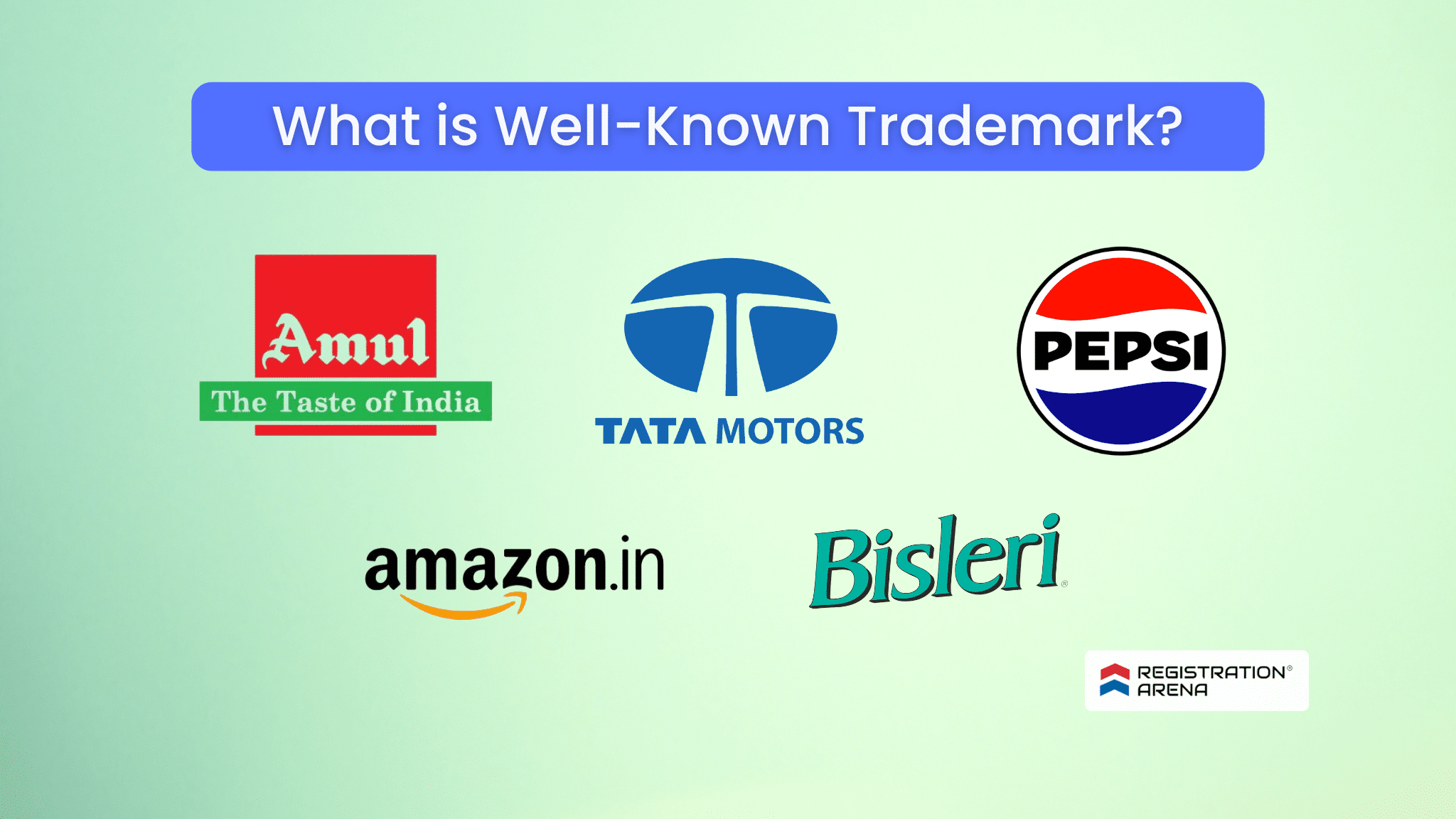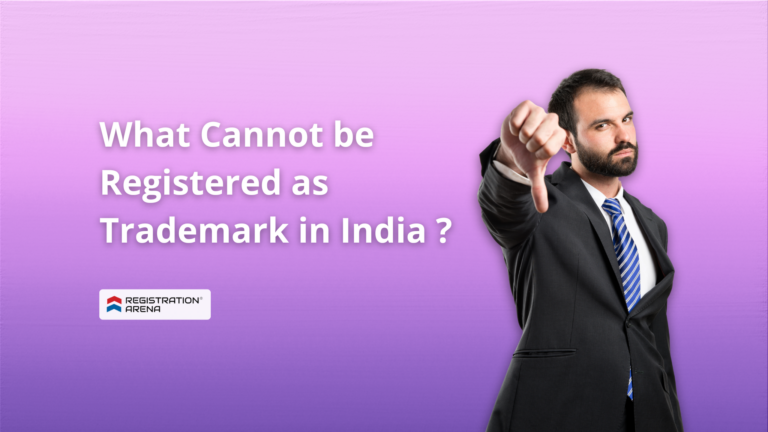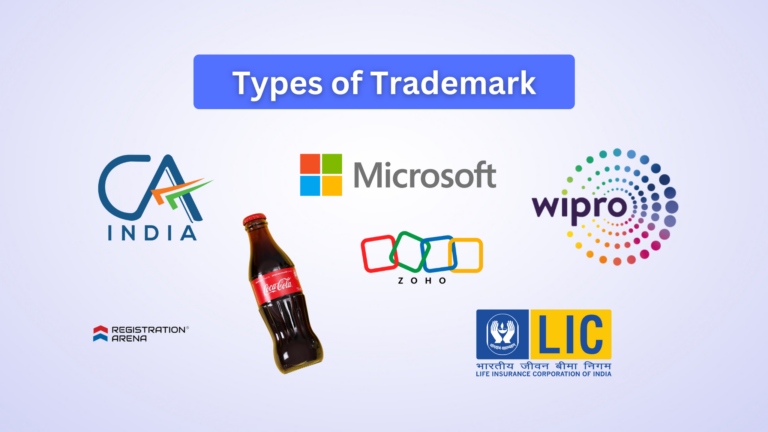Introduction
With the new Trade Mark Rules introduced in 2017, a new procedure was established that allows the Registrar to declare a specific trademark to be “well known.” Trademark owners can submit Form TM-M to request this status. Well-known trademarks have a higher level of protection than regular registered trademarks. This is because they are protected across all classes of goods and services, and across all geographical locations.
The TRIPS Agreement includes rules regarding well-known trademarks, which add to the protections outlined in Article 6bis of the Paris Convention. This requires countries to reject or cancel registrations and to prevent the use of trademarks that conflict with well-known ones. Being a signatory to the Paris Convention and TRIPS, India recognizes the concept of a well known trade marks. Businesses must ensure that their chosen marks do not conflict with existing well-known trademarks, both in India and abroad.
In this blog, we shall see meaning of well-known trademark, criteria for determining well-known trademark, guidelines for filing well-known trademark application, how to register a well-known trademark in India, infringement of well-known trademark, examples of well-known trademark etc.
Meaning of Well-known Trademark?
Section 2(1)(zg) of the Trade Marks Act, 1999 defines well-known trademark as a mark which has become so to the substantial segment of the public which uses such goods or receives such services that the use of such mark in relation to other goods or services would be likely to be taken as indicating a connection in the course of trade or rendering of services between those goods or services and a person using the mark in relation to the first-mentioned goods or services.
A well-known trademark refers to a mark that is recognized by the relevant public for its distinguished goods or services. It goes beyond geographical boundaries and is known across the nation or globally, even beyond the business sectors in which it operates. Recognition, reputation, and the duration of use contribute significantly to a trademark’s status as well-known.
This recognition means that the use of the mark in relation to different goods or services could lead to a perception of a connection between those goods or services and the person using the mark for the original goods or services. A mark designated as well-known enjoys enhanced protection. The protection of well-known trademarks are essential to the business sector because they represent not only goods and services but also a long tradition of trustworthiness, quality, and customer loyalty. The Trademark Act, 1999 imposes a duty on the Registrar to safeguard well-known marks from identical or similar trademarks.
Criteria for determining well-known trademark in India
Points to be considered
While determining whether a trademark is a well-known trademark, the Registrar shall consider all the facts that he considers relevant for determining a trademark as a well-known trademark, including the following factors:
- The knowledge or recognition of the trademark in the relevant section of the public, including awareness gained in India as a result of the trademark’s promotion.
- The duration, extent, and geographical area of any use of that trademark.
- The duration, extent, and geographical area of any promotion of the trademark.
- The duration and geographical area of any registration or application for registration of the trademark under this Act, insofar as they represent the use or recognition of the trademark.
- The record of the successful enforcement of trademark rights, specifically the degree to which the trademark has been recognized as a well-known trademark by any court or Registrar as a result of that history.
- The number of actual or potential consumers of the goods or services.
- The number of persons involved in distributing the goods or services;
- The commercial sectors that deal with the goods or services.
- For the purpose of registration, a trademark can be considered well-known if it has already been recognized as such by a court or the Registrar in at least one relevant public sector.
Points not to be considered
While deciding whether a trademark is well- known or not, is not required to take into consideration the following:
- The trademark’s usage in India.
- The trademark registration status in India.
- The application for registration of the trade mark has been filed in India:
- The trade mark is well-known, or registered, or with respect to which an application for registration has been filed in, any jurisdiction excluding India.
- General awareness of the trademark among the broader Indian population.
Guidelines for filing well-known trademark in India
The Trademark Rules, 2017 are the most recent version of the rules in India for trademark registration. Rule 124 allows the Registrar to grant a trademark the status of “well-known” based on a request in the form of an application. The Indian Intellectual Property Office issued the general guidelines for filing application for well-known trademark:
1. Form and Fees
A person seeking to register his well-known trademark may file an application with the registrar of the Trademark Registry in the proper form TM -M and pay an application fee of one lakh rupees.
2. Online Application
The application shall be filed online through comprehensive e-filing services of trademarks made available at the IP official website.
3. Documents Required for Well-known trademark application
The application for well-known trademark shall be accompanied by the following documents:
a. Statement of Case
Statement of case describing the applicant’s right on the trademark and supporting their claim that their trademark is well-known.
b. Evidence in support of the applicant’s rights and claim
- Evidence as to use of trademark
- Any applications for registration made or obtained
- Annual sales turnover of the applicant’s business
- Evidence as to the number of actual or potential customers of good and services
- Evidence regarding publicity and advertisement of the said trademark and the expenses thereof
- Evidence as to knowledge or recognition of the trademark in the relevant section of public in India and abroad.
c. Details of successful enforcement of the trademark-related rights
Details of successful enforcement of the trademark-related rights specifically to the extent that it has been recognized as a well-known trademark by a Court in India or Registrar of Trademarks.
d. Copy of the Judgement
Copy of the Judgement wherein the trademark has been determined as well- known by any Court in India or Registrar of Trademarks.
e. Size of the document
The size of the documents submitted must be in PDF format with a resolution of 200 X 100 dpi on A4 size Additionally, the file size should be within the limit of 10 MB.
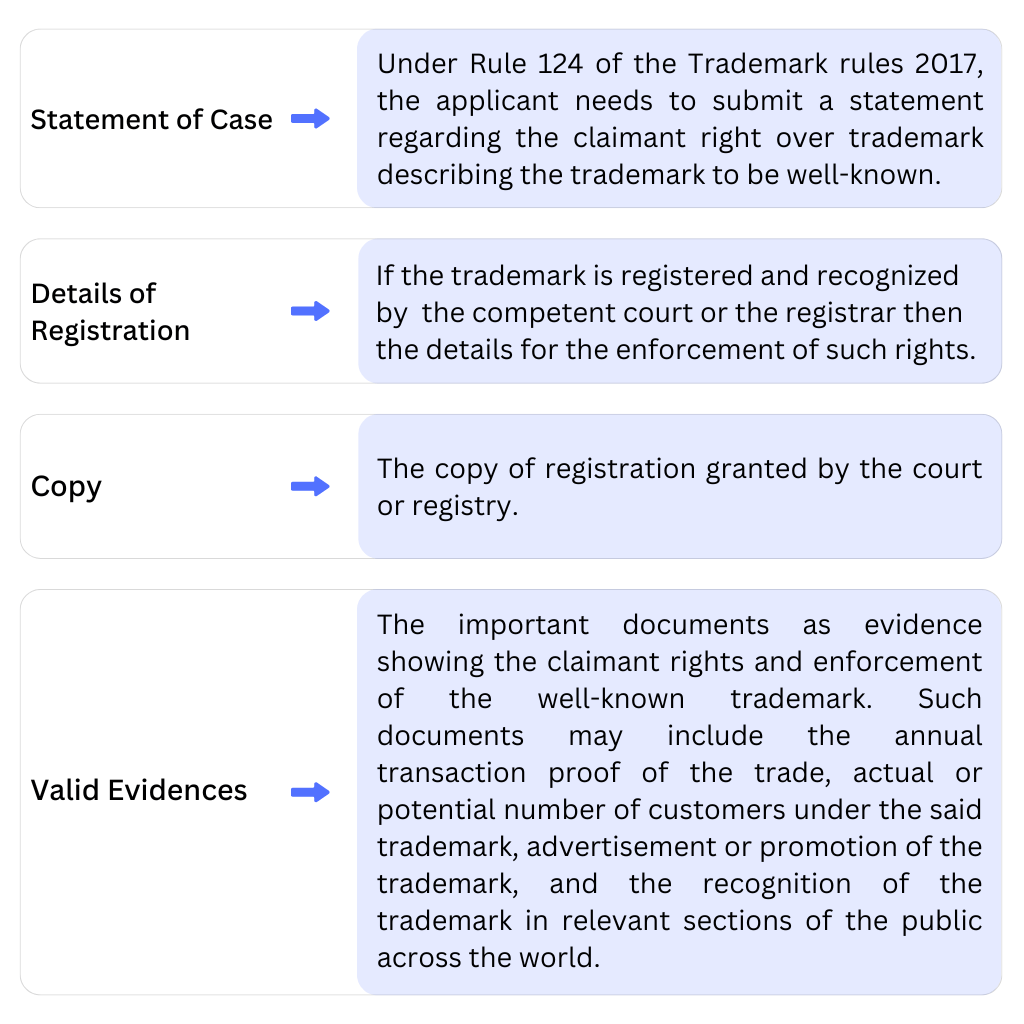
4. Submission and receipt of Application
- The office will consider the applicant’s claim based on the documents submitted after the receipt of the application.
- The office may publish the details of the proposed trademark in the list of well- known trademarks.
- Anyone who is against the inclusion of the proposed trademark in the list of well- known trademarks may file its objection in writing to the Registrar of Trademarks stating the reasons for their objection. Additionally, they can send supporting documents, if any.
- A copy of the objection may be sent to the applicant in order to receive their comments within the prescribed time .
- The office shall notify the objecting party and the applicant of their decision in respect of objection
- The decision of the office, with regard to the inclusion the proposed trademark in the list of well-known trademarks, shall be informed to the applicant.
- If the proposed trademark is determined as well-known, it will be notified in the Trade Marks Journal and will be added to the list of well-known trademarks provided on the official website.
How to Register a Well-Known Trademark in India?
Understand What Constitutes a Well-Known Trademark
A well-known trademark is a mark that is popular or famous in a particular industry or among consumers due to its extensive use and promotion. Well-known trademarks are afforded a higher degree of protection than ordinary trademarks and are protected against the use of identical or similar marks for goods or services that are not similar to those for which the trademark is registered.
Conduct a Detailed Trademark Search
Before you apply for registration, it’s crucial to conduct a comprehensive trademark search. While adopting any mark, the business entity should also keep in mind and ensure that the mark is not being used by any other person in India or abroad, especially if the mark is well-known
Prepare a Strong Application
The application must be filed in Form TM- M for registering a well-known trademark and it must provide detailed information about the trademark, the goods or services it pertains to, and the geographical regions where it is already recognized. It must be accompanies by the documents such Evidence of its recognition, such as media reports, market surveys, sales figures, and historical data showing the duration of its use, which enhances the application’s strength.
Legal Representation
Due to the complexities involved in registering a well-known trademark, it’s beneficial to seek the help of experienced legal representation. A trademark agent can provide essential guidance throughout the process, aid in preparing proper application, and represent your brand in any legal disputes or objections that can come up during well-known trademark registration. Take the help of our experts and file it easily. Get in touch with us now!
Filing the Application
File the trademark application online through comprehensive e-filing services of trademarks made available at the IP official website.
Respond to Objections and Oppositions
Once the trademark application is filed, it is reviewed for any conflicts or issues that could prevent registration. Any objections from the trademark office or oppositions from third parties must be addressed quickly and effectively.
Promote and Monitor the Trademark
During the registration process, it’s important to actively use and promote the trademark. Keeping the trademark visible and recognized is essential for maintaining its well-known status.
Maintain and Renew the Trademark
Once registered, a well-known trademark must be maintained. This involves renewing the registration and continuing to use the trademark in commerce.
Infringement of Well-Known Trademark
- Section 27(2) of the Trademark Act prohibits the use of well-known trademarks that are similar or identical in similar or distinct goods and services. Sections 29 and 30 of the Trademarks Act, 1999 deal with the provision of a remedy in the event of trademark infringement.
- For the purpose of redress in the event of trademark infringement, whether it is a common or well-known trademark, it must be registered in India. If the well-known trademark registered as the ordinary trademark is used for identical goods and consideration, Section 29 subsections 1, 2, and 5 will apply to the well-known registered trademark in the same way that they apply to the ordinary registered trademark. The distinction in action following the infringement of a normally registered trademark and a well-known trademark is brought forward through a series of events outlined in Section 29(4) of the Trademark Act of 1999.
- According to the aforementioned section, “a registered trademark with a reputation in India is said to have been infringed if any person uses a trademark similar to a registered trademark, or similar trademark used for different goods or services, or there is a malicious intention to profit from the registered trademark’s repute.” This provision is consistent with India’s TRIPS obligations.
- Remedies for infringement of well-known trademark:
- A mark cannot be registered if it’s identical to a registered trademark in all the classes of goods and services.
- Removal of infringing trademark.
- Prevention of such organization or company which is related to the infringing the trademark of the original well-known trademarks.
- Punitive damages shall be imposed on the invaders who did infringement.
Examples of Well-known Trademarks
Bisleri
The brand “Bisleri” is first well-known trademark in India. When people in India think of “water bottle brand, “Bisleri” is the first name that comes to mind. As the pioneer of bottled mineral water, Bisleri quickly became known for trust and quality, with its distinctive blue label representing clean, safe water.Bisleri set a trend, encouraging many competitors to enter the market. As competition grew, having a unique logo and strong branding became important.Every aspect of Bisleri’s branding, from the blue label to the bottle shape, was designed to connect with consumers. The brand also built strong distribution networks to ensure its products were easily available across India. Its focus on quality and safety, along with modern manufacturing and strict quality controls, helped build consumer trust.This Well-Known Mark enables consumers to identify and distinguish Bisleri’s products from those of other companies in the market.

Ford
The trademark “ FORD” is particularly well-known among members of the sector and general public. The long duration for which the mark has been in use, the wide geographical area of use, the general public’s knowledge of the trademark “ FORD” and its goodwill and reputation as a result of the extensive promotion, publicity and advertisement, use of the mark and extensive sales made under the mark in India and other countries and the numerous registrations obtained of the mark establish the fact that the mark “ FORD” has indisputably achieved the character of well-known trademark.

Boroline
The Delhi High Court has recognized Boroline as a “well-known trademark,” as it has attained the status of a household name which is also one of oldest trademarks in continuous use that precedes the independence of India enhancing its brand identity among consumers. According to the Trade Marks Act, 1999, well-known trademarks receive protection even outside their industry. Justice C. Hari Shankar noted Boroline’s widespread recognition and over 90 years in the Indian market, highlighting its cultural significance. The court emphasized the need to protect well-known marks from imitation and unfair competition. By granting this status to Boroline, the court has strengthened the brand’s legal protections, making it easier to defend against infringement.
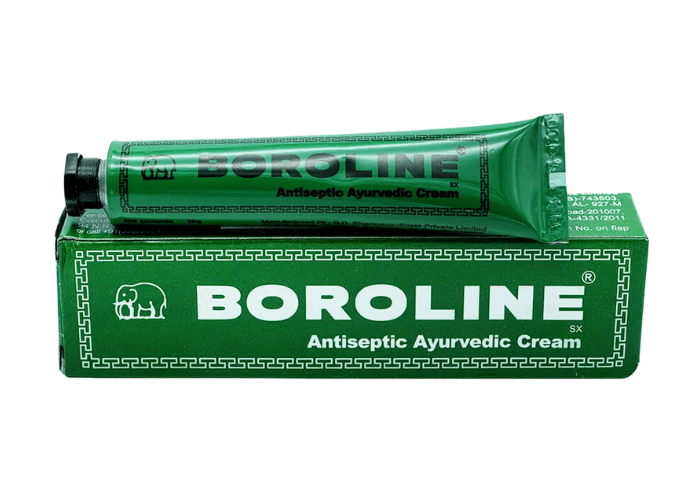
Conclusion
To sum up, A well-known trademark is a symbol or name that is widely recognized by the public and is associated with a popular brand or company. Examples of well-known trademarks are Google, Tata, Yahoo, Pepsi, Reliance, McDonald’s, Microsoft. etc. Registering a well-known trademark is a complex but beneficial process that offers strong protection for your brand. It requires a proactive approach, starting with understanding what makes a trademark well-known and continuing with active promotion and legal safeguards. By following these steps and working with experienced legal professionals, businesses can achieve and maintain the valuable status of a well-known trademark, ensuring their brand is protected globally. At Registration Arena, our expert team is here to guide you through the process. Contact us today to start the Trademark Registration process in India smoothly and efficiently.
